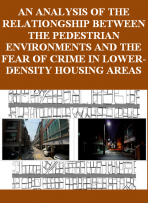An Analysis of the Relationship between the Pedestrian Environments and the Fear of Crime in Lower-Density Housing Areas
This study is to analyze the relationship between the pedestrian environments and the fear of crime in lower-density residential area. This study attempts to identify the effect of pedestrian environmental factors on the fear of crime, as well as to determine the appropriate model, and to investigate the patterns of pedestrian pathway and the differences in fear of crime at investigating area.
To do this, the area to be investigated in this study was selected through 3 stages, and a survey was conducted to measure residents’ fear of crime and their awareness of pedestrian environments.
These findings assumed that the physical environmental factors and CPTED basic principles attributed to potential offenders and actual commitments of crime as well as the fear of crime. Taking these in considerations, it is highly required to build the safer pedestrian environments to ultimately improve quality of residents’ life; and the direction of these should be determined by a combination of studies: 1) a comprehensive study on the integration of victims of crime individual vulnerability, official control and disorder, as well as the social environmental factor, particularly on collective efficacy 2) theoretical and empirical study targeting experts specialized in architecture, urban planning, crime or police.
Tài liệu được định dạng file PDF(.pdf)
Xem chi tiết tài liệu trong phần Nội dung tóm tắt:
(bt)
